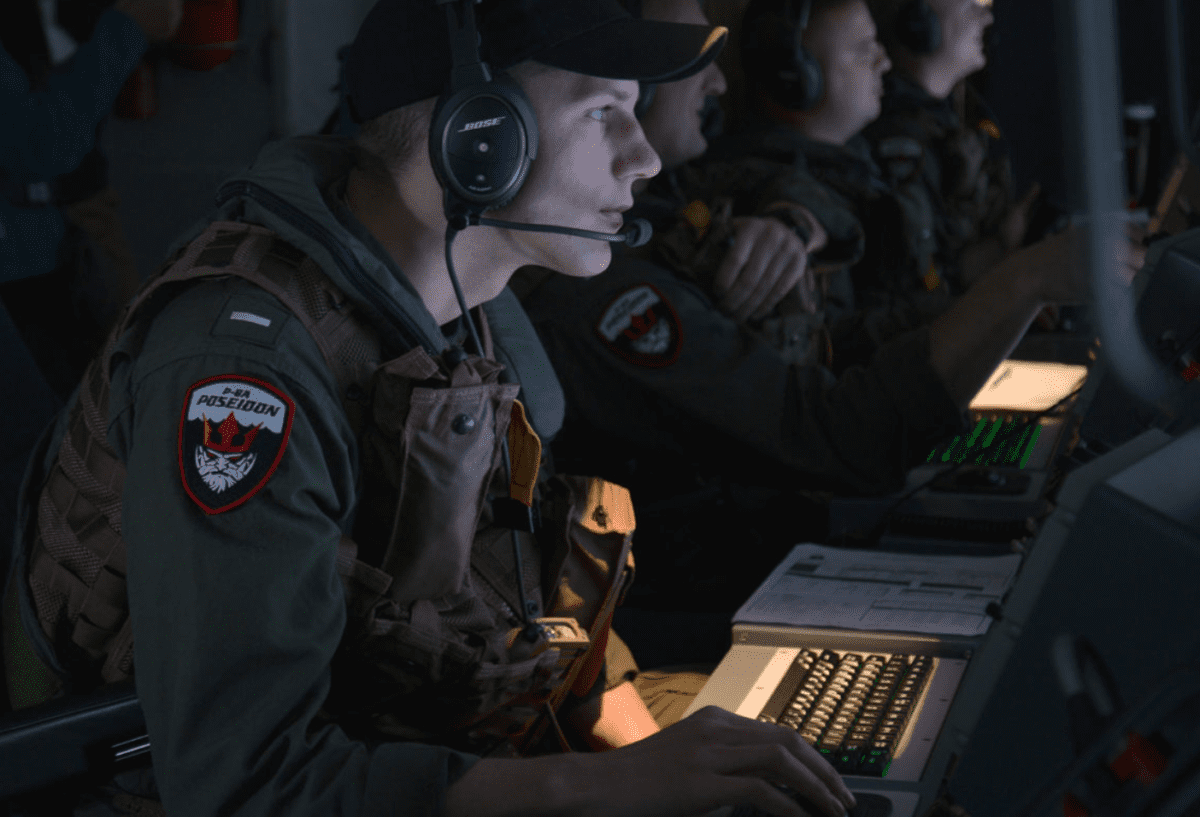Team Electric elevates Spirit of Tasmania V
Handover of the second of two 48,000 GT ferries that embody Finland’s largest ever export deal with Australia also completes an assignment which saw Team Electric deploy wide-ranging technical expertise...

Lieutenant Junior Grade Edward Potts-Szoke, a naval flight officer attached to Patrol Squadron VP 16, monitors his workstation on a P-8A Poseidon during a mission to assist in search and rescue operations for Malaysia Airlines flight MH370 on April 7, 2014.
By David Stringer (Bloomberg) – Leaning on a window ledge of a Boeing Co. (BA) P-8A Poseidon, U.S. Navy aircrewman David Everly peered over the Indian Ocean and squeezed a button clasped between his hands.
As ships 700 feet (213 meters) below sought signals from Flight 370’s black boxes, the 32-year-old acoustic warfare systems operator was marking the location of potential debris spotted during a nine-hour hunt for signs of the missing Malaysian Airline System Bhd. (MAS) jet.
A month after the plane disappeared with 239 passengers and crew on board, investigators say the aerial hunt for physical evidence remains critical even after an Australian ship detected signals consistent with those from an aircraft’s black box at the weekend. Airliner seats or baggage may yet be spotted bobbing on or close to the surface, yielding the breakthrough the international team is seeking, according to the crew on board the maritime surveillance aircraft.
Almost four hours into the mission that scoured 13,000 square miles of ocean yesterday, Everly alerted colleagues to possible debris, sending the Poseidon banking sharply as it slowed to swoop back across the site three times.
“I was scanning from the wing back to the fuselage, and saw something in the corner of my eye, which was a gray or green color,” said the aircrewman, who is usually tasked with handling acoustic instruments to hunt for submarines.
The object may have been a one meter-square strip of fabric or a tangle of seaweed, according to Everly, who spent stretches of 45 minutes to an hour staring over the ocean, its waves cresting into hypnotic peaks of white foam.
“It’s exciting, but you really have got to be focused,” he said, perched on the edge of his seat, his leather jacket crumpled along the windowsill to help cut glare. “Things are racing past so quickly.”
Details of Everly’s sighting, the only one made during the flight, were passed to a coordination center in the Australian capital, Canberra, said Lieutenant Josh Mize, a 33-year-old tactical coordinator on board.
As many as 11 military planes, three civilian aircraft and 14 ships will take part in today’s search as investigators prepare to deploy an unmanned submarine to scan the ocean floor, according toAustralia’s Joint Agency Coordination Centre in charge of the effort.
Among the vessels in the search is Australia’s Ocean Shield, which detected a pair of signals consistent with those from an aircraft’s black boxes at the weekend as it pulled a U.S. Navy towed pinger-locator through the water. A Chinese ship also reported picking up acoustic signals.
The “promising” lead didn’t mean the aerial operation would be reviewed, retired Air Chief Marshal Angus Houston, who heads JACC, told reporters yesterday.
“Not at all,” Houston said. “We’ve still got a lot of difficult, painstaking work to do to confirm that this is indeed where the aircraft entered the water.”
Inside the dimly lit cabin of the P-8A Poseidon, crew sat at five workstations, panning and zooming a camera mounted near the landing gear, while tracking other aircraft and ships in the search effort and monitoring radar for possible debris.
“It’s difficult from the air to see an object and to tell exactly what it is,” said electronic warfare operative Christopher Walsh, 23, on his 12th flight in the search for the missing jet. “We’ve flown as low as 200 feet, but you are going so fast you can just get an idea of the size, the shape and the color of an object. That’s about the best description that you can give.”
One of Walsh’s two screens showed grainy gray radar imagery, with merchant ships picked out as thin white lines. On previous searches, fainter traces have indicated pods of dolphins, discarded rubbish from shipping vessels or possible debris.
At Walsh’s right elbow, fellow operator Mike Burnett manipulated the aircraft’s camera with a joystick and trackpad, his hand occasionally dipping into a bag of Rold Gold pretzels.
“It’s natural to think that if you don’t find anything you aren’t contributing,” said Lieutenant Clayton Hunt, the flight’s 28-year-old mission commander. Each square mile checked by the Poseidon can be ruled out, allowing assets to be deployed to another area, he said. “Today’s mission was on par with that, so that’s success.”
Copyright 2014 Bloomberg.

Sign up for gCaptain’s newsletter and never miss an update

Subscribe to gCaptain Daily and stay informed with the latest global maritime and offshore news
Essential news coupled with the finest maritime content sourced from across the globe.
Sign Up